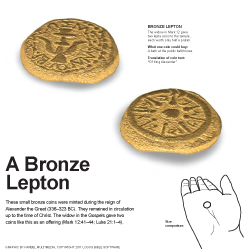12:1–12 This parable has an obvious and incriminating meaning for the religious leaders (v. 12). The vineyard is Israel, and the one who plants it is God. The religious leaders are to tend the vineyard, but they turn out to be unfaithful tenants. The servants that are sent and killed are the many martyred prophets. The final messenger is the vineyard owner’s beloved son—Jesus Himself. This identification implies that He is the Son of God. Jesus’ clear message is that the religious leaders, due to their unfaithfulness, will no longer have responsibility over God’s people. |
12:1 A man planted a vineyard Recalls the imagery of Isa 5:1–2 (compare Isa 5:7). Jesus modifies this image by focusing on the role of the tenant farmers rather than the vineyard itself (compare Isa 5:12).
Parable of the Tenant Farmers | ||
12:5 they killed In the ot, God condemns the people of Israel for rejecting His prophets (e.g., Jer 7:25–28; Zech 1:4–6).
12:10–11 Jesus cites Psa 118:22–23. The imagery of this psalm is associated with Yahweh’s salvation from foreign enemies. Yahweh unexpectedly uses the stone rejected by a group of builders as the most important stone in His building project. Jesus concludes His parable with these lines to show the folly of the religious leaders of Jerusalem. They have rejected Jesus, but He will be used by God the Father as the most integral part of the plan of salvation. |
 Jesus’ Fulfillment of Old Testament Prophecy Table
Jesus’ Fulfillment of Old Testament Prophecy Table
12:13 Pharisees See note on Mark 2:16.
12:14 to pay taxes The Romans conducted a registration for the purpose of determining a province’s fiscal liability. Here, it refers to the taxes imposed as a result of a census, specifically to the “head tax.”
Caesar Refers to the office of the Roman emperor. During Jesus’ ministry, the emperor was Tiberius (reigned ad 14–37).
12:15 denarius A silver coin worth roughly a day’s wages.
12:17 Give to Caesar Jesus’ teaching makes clear that His followers should be willing to be subject to political authorities (provided that it does not compromise their allegiance to Him). However, just as denarii belong to Caesar because they bear his image, the whole of one’s life belongs to God because people bear the image of God (Gen 1:26–27).
12:18–27 The Sadducees present a hypothetical situation about bodily resurrection. Their intention is to propose a riddle based on an ot law in order to disagree with Jesus’ view of resurrection. His response, however, condemns them for not understanding the Scripture and denying the power of God. |
12:18 Sadducees A prominent Jewish sect.
The Sadducees were a Jewish religious group probably associated with the priests (Acts 5:17). They are known from the nt, the first-century Jewish historian Josephus, and later rabbinic traditions. Josephus lists them as one of the three main schools of thought among the Jews in the first century ad. Sadducees did not believe in the resurrection of the dead—probably because there was no clear basis for such a doctrine in the Pentateuch (Genesis—Deuteronomy), which they seem to have held as their sole authoritative scripture (Acts 23:6–7). Mark does not indicate that the Sadducees conspire in the plot to eliminate Jesus. |
12:19 his brother should take the wife Refers to the law of levirate marriage found in Deut 25:5–10.
12:27 He is not God of the dead Jesus argues that because God’s statement is in the present tense (“I am”), He is not concerned with issues that result from a person dying, but instead with the resurrected life, which is decidedly different (Mark 12:25).
12:28–34 Jesus affirms that a person’s highest obligation is to love God with his or her whole life (v. 30). This also alludes to the things of God that must be given back to Him, which He mentioned earlier (v. 17). |
12:28 scribes See note on 1:22.
12:29 The Lord our God, the Lord is one Jesus recites the Shema (Deut 6:4–5), the central confession of Israel’s faith.
12:30 whole mind While the Hebrew text of Deut 6:5 includes three aspects of loving God, Jesus lists four, including a reference to the “mind.” In ancient Hebrew thought, the heart was the seat of human intelligence and will. When the scribe (teacher of the law) restates the command, he refers to “understanding” rather than “soul” and “mind” (Mark 12:33). Jesus then recognizes that the scribe has answered “wisely” or “with understanding” (v. 34). This cluster of words related to the mind and understanding reflects a larger theme of Jesus’ ministry in Mark: The true character of Jesus and the kingdom is veiled and requires true understanding.
12:31 love your neighbor as yourself Jesus quotes a portion of Lev 19:18.
12:36 The Lord said to my Lord A quotation from Psa 110:1. “The Lord” refers to Yahweh; “my Lord” identifies the Messiah—whose position at Yahweh’s right hand indicates superiority over all the world, including David. This parallels Jesus’ self-designated title “Son of Man” (see note on Mark 2:10).
12:37 how is he his son In antiquity, being the son or descendant of someone implies a hierarchy; the son is inferior to the older and more important forebear. David, as the most famous and celebrated king in Israel’s history, naturally was held in high regard. However, the Messiah would be superior to David. The dilemma Jesus is presenting (by means of Psa 110:1) concerns how the Messiah could be both superior and inferior to David.
12:38 in long robes Worn by the learned as a sign of their status.
12:41 coins The term here means “bronze,” an idiomatic way of referring to coins in general.
12:42 one poor widow Compare Mark 12:40.
a penny The Greek word used here refers to a small monetary denomination worth 1/64th a denarius. A denarius was worth about a day’s labor.
12:44 her whole means of subsistence This links the widow’s action to the greatest commandment (see note on v. 30) and to Jesus’ explanation of what belongs to God (see note on v. 17).

|
About Faithlife Study BibleFaithlife Study Bible (FSB) is your guide to the ancient world of the Old and New Testaments, with study notes and articles that draw from a wide range of academic research. FSB helps you learn how to think about interpretation methods and issues so that you can gain a deeper understanding of the text. |
| Copyright |
Copyright 2012 Logos Bible Software. |
| Support Info | fsb |
 Loading…
Loading…


 terminated Herodian rule over Judaea. According to Josephus, a Galilean (or Gaulanite) named Judas provoked widespread opposition over this taxation, maintaining that it was a form of servitude inconsistent with God’s sovereignty over Israel (
terminated Herodian rule over Judaea. According to Josephus, a Galilean (or Gaulanite) named Judas provoked widespread opposition over this taxation, maintaining that it was a form of servitude inconsistent with God’s sovereignty over Israel (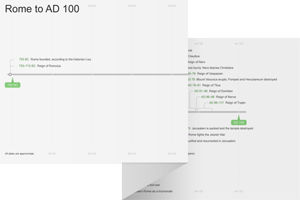
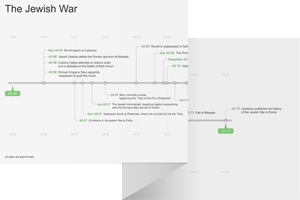
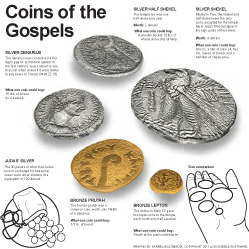
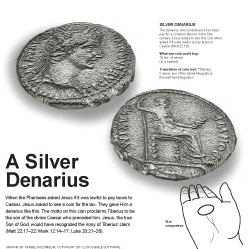
 Sadducees
Sadducees 